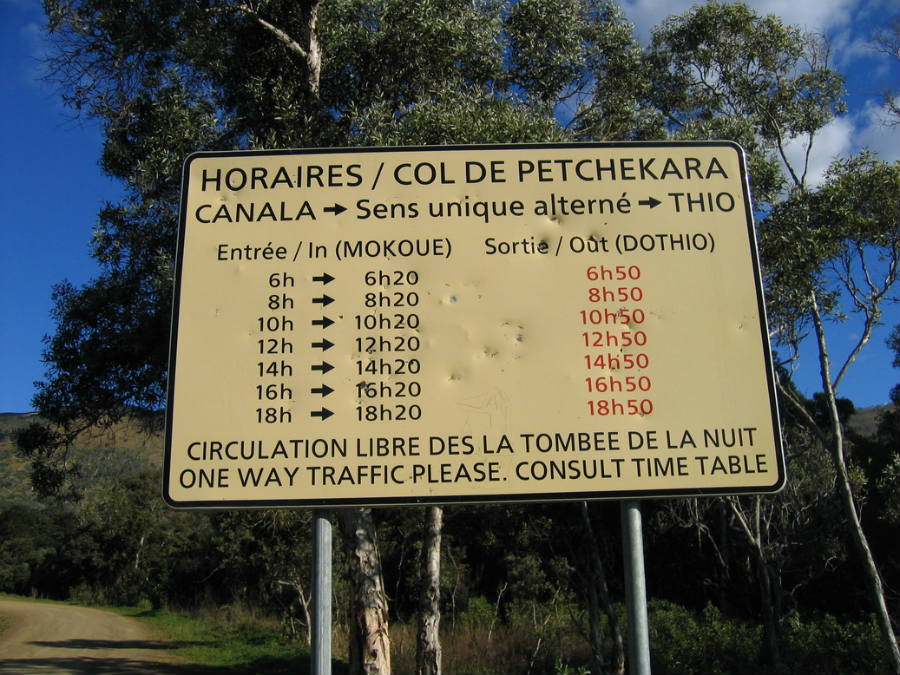Thio is the largest township in New Caledonia. The ‘Thio’ river runs through the middle of the town and separates it into two parts: Thio Village and Thio Mission. The population comprises 13 tribes who are dotted along the river and the coast. They belong to the Xaracuu custom area.
Thio Village is the heart of the town where you can find shops, schools and administrative buildings. On the other side of the river, Thio Mission is home to the Catholic Mission and the nickel warehouse together with the old and new ports.
Must do:
Mining museum
(Open Monday-Friday 8am-4.30pm, Saturdays 8.30am-2pm). Entrance fee.
The museum is housed in the old management building of the mine dating back to the 1980s. You can see an old steam engine at the entrance. The museum details the history of Thio and has an interesting collection of old and modern mining tools. The museum was entirely refurbished in 2015.
The Thio tourist office organises visits to the mine once a month. A local historian, Maurice Fels, who also works at the mine, will bring its history alive for you! The visit is rounded off with a traditional meal in a local tribe.
Moara white sandy beach
This beautiful white sandy beach is located after the SLN wharf. Picnic areas are available. Swimming and relaxation are guaranteed !
Ouroue black sandy beach
This beach with its black sand is to the north of the village and has fantastic landscapes.
Timetabled road
The ‘timetabled road’ is 13km long and is so called because it is extremely narrow and you can only drive on it at certain times of the day. If you go from Nakety to Thio you can drive only during even numbered hours, and if you go in the opposite direction you must take this road during odd numbered hours.
Mission Church
This church was built in 1880 by Father Simonin and is one of the oldest churches in New Caledonia.
Thio Market
The market, which is open every day except Sunday, is an ideal place to buy fresh fruit and vegetables and to meet the locals.
Petroglyphs
Petroglyphs are ancient stones with engraved drawings which have a cultural and religious signification. They date back to the Lapita era – around 1000 BC. You can see petroglyphs in the tribes of Koua and Ouindo, on the Tamanou beach and in Ouroue. Keep your eyes open along the path and you will spot the rocks with these ancient engravings!
Japanese Cemetery
When nickel was discovered in 1864 and the New Caledonian mines were set up, many Japanese workers were hired. The first ship – the Hiroshima Maru – arrived in Thio on 25th January 1892 with 599 Japanese workers on board. Nearly 6000 Japanese workers in total came to New Caledonia offering their services until the last arrival in 1919. Many of them stayed whilst others left once their contract had finished.
In 1941, following the attack on Pearl Harbour, the Japanese were suspected of being spies and were put in prison, then sent to Australia before being sent back to Japan. The Japanese cemetery has 150 tombs where the Japanese who worked in the mine between 1892 and 1941 are buried. The tomb stones come from the mines where they worked. A memorial monument was set up in 2012 to mark the 120th anniversary of their arrival in New Caledonia.
The Joliette shipwreck
The Joliette, a 3-mast sailing ship used in the past to transport nickel from Thio to Noumea, sank in 1909 during a cyclone. The shipwreck lies 12 metres deep, about 50 metres from the wharf. Today it is a fascinating dive site – for all levels of divers.
Port Bouquet Bay
Port Bouquet Bay, which is sheltered by the Nemou and Toupeti islands, is an ideal mooring place for boats as it is protected from the wind.















